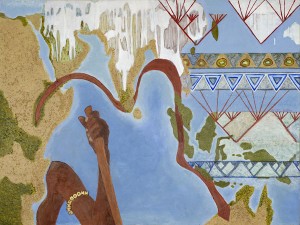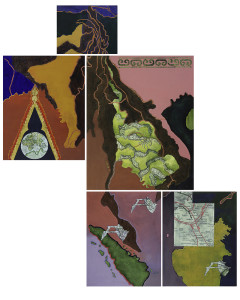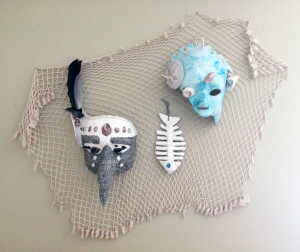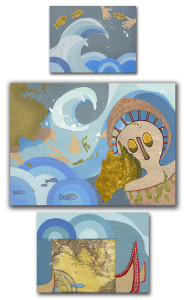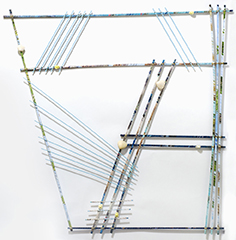After completing pieces in African Origins alcove (200,000 years ago), I began working on the Southeast Asia alcove (40,000 years ago), a region that is quite familiar to me. I traveled the entire region in 1968. I was fortunate to visit Ankor Wat prior to the reign of the Khmer Rouge. I lived in Australia for a year, the Philippines for a year, and Singapore for two years. I helped launch community development projects in Indonesia, Malaysia, Hong Kong, and Taiwan. I did research to augment this experience.
Initial migrations into Southeast Asia were along the coasts, but later migrations went up and down the vast river system created by snowmelt from the Himalayan mountains. These rivers created the fertile Mekong delta which is believed to be the origin of rice cultivation. The entire region, but especially Myanmar (Burma, Siam) later became a crossroads of religious traditions.
OCEANIA – 2,500 Years Ago
It’s hard for me to separate Southeast Asia and Oceania because culturally it was descendants from the first coastal migration who much later peopled far-flung islands in the Pacific Ocean. So even though it was Homo Sapiens last major migration, I am including it here with Southeast Asia. It also seems relevant because many of these islands are now threatened by rising sea levels caused by climate change.
Island cultures in contemporary Taiwan, Philippines, and Papua New Guinea created a complex navigation system that allowed them to roam the ocean. Besides memorizing extensive star, moon, and sun configurations, they created stick charts that served as memory devices showing wave currents and islands. Along with knowing songs and chants that contained knowledge of bird and sea life, their navigators could lie in the bottom of a boat and feel the currents. Peopling Polynesia sometime between 3500 to 2500 years ago was humanity’s last major migration.

